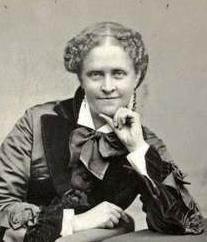|
Here’s a song called "Whispering" (1920). It was originally credited to the songwriting team of John Schonberger (music) and Malvin Schonberger (lyrics). Later when the copyright was renewed, Richard Coburn was credited as the lyricist and Malvin Schonberger’s name disappeared, and Vincent Rose was added as co-composer. I don’t know what happened there, clearly there was some behind-the-scenes intrigue going on at "Whispering" headquarters. "Whispering" was the bee’s knees in 1920 when Paul Whiteman made it a big hit. Since then, it has remained a staple of the swing repertoire. It passed into the bebop era in the form of Dizzy Gillespie’s "Groovin’ High," which uses the chord changes of "Whispering." I like "Whispering" because it’s such a catchy little earworm. I also like the title. I try to play at least parts of the song extra quietly to evoke literal whispering. Before I was a full-time pianist, I was a librarian for two years. I’m not kidding. So I know a thing or two about whispering. As a pianist and former librarian I feel particularly well-suited to interpret this classic by the Office of Schonberger and Schonberger (or should I say Schonberger, Coburn, and Rose?). Anyway, I know Whispering so well that I can play it in any key, and I intimately refer to it not by its name, but by its Dewey Decimal number: 783.62W. My rendition is very much indebted to two of my favorite pianists, Teddy Wilson and Fats Waller. Teddy Wilson liked to walk tenths in the left hand and play slick clarinet-like single note lines in the right. Fats Waller liked to play things that...well….things that sound Fats Wallery. Its hard to explain. All I know is that I can’t seem to play a song for more than 20 seconds without a few Fats Wallerisms creeping in. One day, I decided it would be nice to spice up my repertoire with some Latin flavor. So I turned to the romantic Mexican-inspired waltz "Ramona," a massive hit from 1927, composed by Mabel Wayne. I was aware that "Ramona" was a hit movie in the 1920s starring Mexican actress Dolores Del Rio. The cover of the sheet music and various images from the film that I found on the internet, led me to assume that the movie was some kind of fluffy romance that takes place in old Mexico. Not having seen the movie, I concocted an elaborate arrangement of "Ramona" in which I incorporated various Latino melodies, like "La Paloma," "Cielito Lindo," "Leyenda" (by Albeniz), and of course, "La Cucaracha." I call this arrangement "Ramona Rhapsody Español."  Helen Hunt Jackson Helen Hunt Jackson I have been playing this arrangement of Ramona at many of my concerts for the past several years. I still haven't seen the movie. But I finally read Ramona - the novel from 1882, by Helen Hunt Jackson. This was what the movie was based on (and please do not confuse it with the Ramona Quimby childrens' books!). Upon reading the novel, I discovered that my assumptions about the "Ramona" story were way off. First of all, it technically doesn't take place in Mexico, but in California in the mid/late 1800s. But the main thing that I got wrong was that Ramona was no fluffy romance. It was intense. Here's my very watered-down synopsis: Ramona, who is raised as part of the old Mexican/California aristocracy, and Alessandro, a Native American, fall in love. They elope, and along with the rest of the Native American communities in California at that time, they experience grave injustices that make your blood boil. As part of the 1862 Homestead Act, Native American land was sold to white settlers, and the Native Americans were driven from their homes. They found themselves desperate and without means of making a living. Ramona and Alessandro have a baby, try their best to survive, but they are beset by tragedy. So, although "Ramona" is a lovely and pleasant tune, the story is dark, political, and outrage-inducing. I recommend you read the book. It has some great drama and romance, it paints an interesting picture of 19th century California, and you learn some disturbing and shameful aspects of American history along the way. But if you want to just close your eyes and think of romantic images of Spanish missions, orange groves, and pretty senioritas, please enjoy my rendition of this lovely song from 1927. |
Ethan UslanMusic, stories and thoughts from an old-time piano player. Archives
May 2023
Categories |


 RSS Feed
RSS Feed